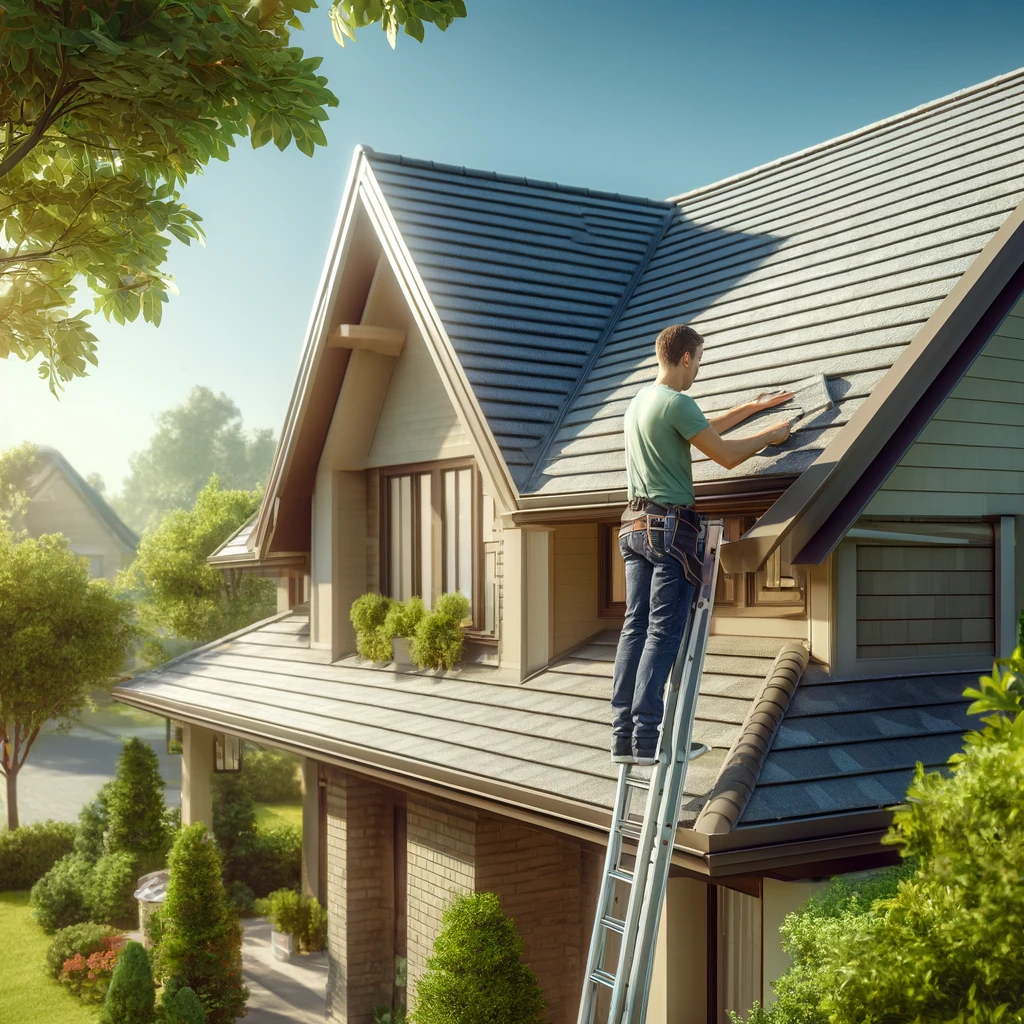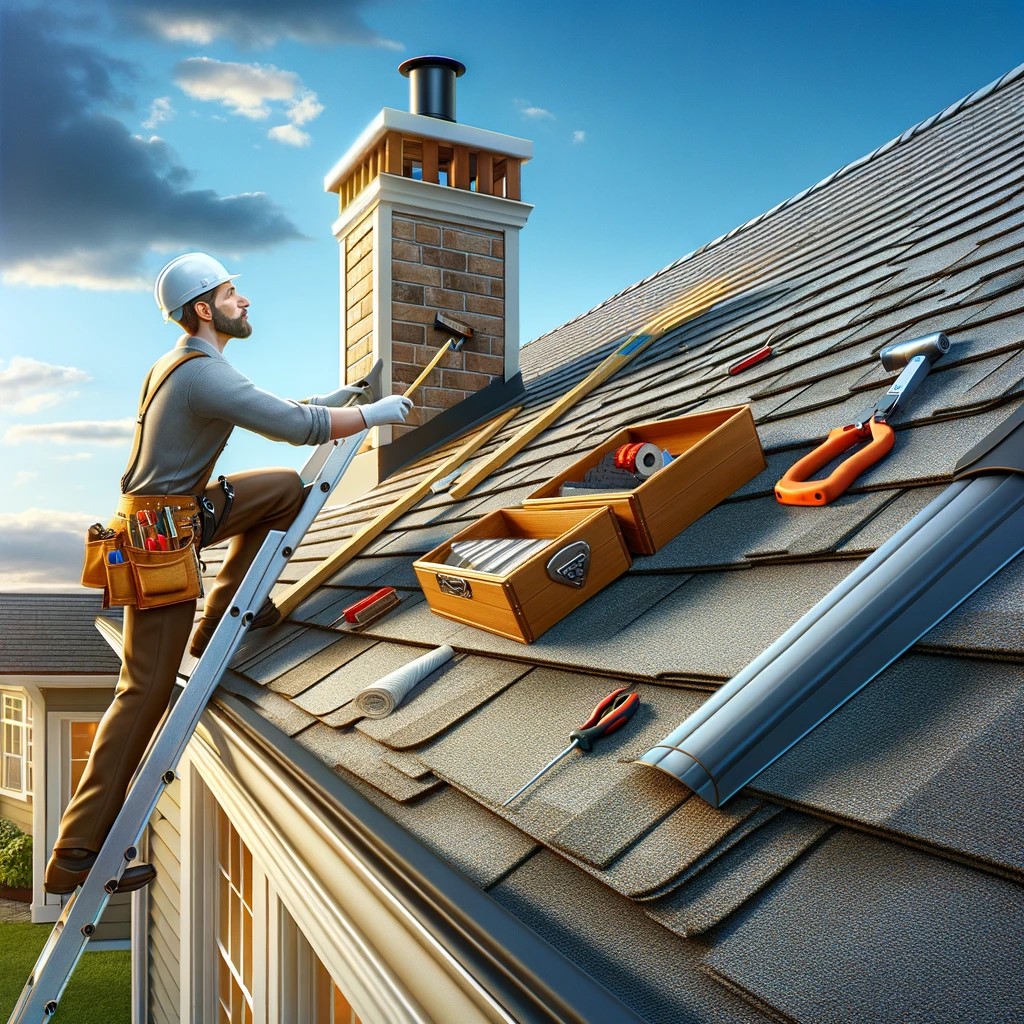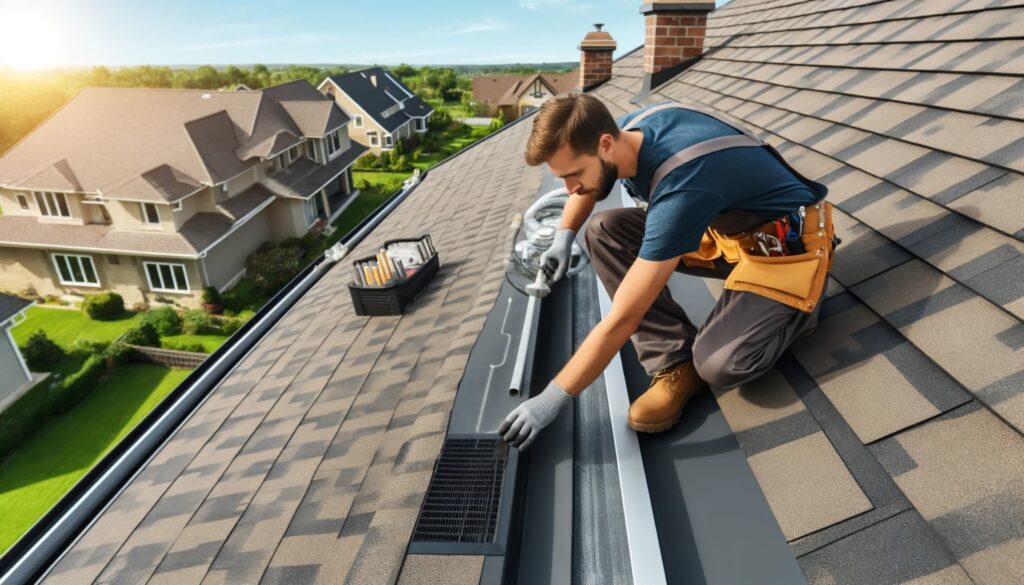The Significance Of A Good Roof:
What Every Homeowner Should Know About Roofing
A roof isn’t just another structural part; it’s an essential shield that protects your household and properties from all the outside elements. Rain, wind, snow or sun might enter the house, but a door creates a holy element of safety and comfort. Nevertheless, this necessary component of your property is typically neglected by the homeowner until a serious problem develops — often resulting in expensive repairs and headaches.
Not taking care of your roof spells big trouble. For example, leaks can flood your ceilings, walls and precious belongings. A tiny slice in the roof can grow and result in severe damage to your home, including structural issues, mold growth or a reduction in energy performance over time. The most dangerous of those risks can be mold, particularly for allergy or respiratory sufferers.
Taking a proactive approach to roof maintenance can be one of the best investments you make. However, regular roof inspections and addressing small damages right away can keep those repair bills low, saving you hundreds or thousands on potential damage (depending on your local roofing systems) and hopefully prolonging the lifespan of a little while longer! You’ll never pass up a tune-up for your car, why skip taking care of one the most expensive parts of your house that holds everything in it together?
This complete guide will provide you with all the information and resources necessary to help you make an accurate decision about your roof. We will be discussing all sorts of things, like the different types of roofing materials and how long they last to what to look for when your roof is damaged or you need a contractor.
Facts to Know about Your Roof – Materials, Lifespan & Problems you Might Face
You need to know, as a homeowner, the bare basics before you can really make any decisions regarding roof maintenance and repairs. Learning about the standard roofing material and their life expectancies along with paths in which problems can occur will help you to detect a problem before it becomes too bad, thus allowing for wise roof care decisions.
Roofing Products as well as Life expectancy
Asphalt shingles, Tile roofing, and Metal roofing are among popular types of roofing materials. This is all to say that each material has its positives and negatives — ones that affect the durability, how long it lasts, as well as the cost of course.
| Material | Pros | Cons | Lifespan |
|---|---|---|---|
| Asphalt Shingles | Affordable, easy to install, variety of styles and colors | Less durable than other options, prone to algae growth, susceptible to wind damage | 15-30 years |
| Metal Roofing | Durable, fire-resistant, energy-efficient, long lifespan, available in various styles | More expensive upfront, can be noisy during rain or hail | 40-70 years |
| Tile Roofing | Long-lasting, aesthetically pleasing, fire-resistant, low maintenance | Heavy, expensive, can be fragile and susceptible to cracking | 50-100 years |
Knowing how long your current roofing material is meant to last will you give yourself a rough idea of when abouts you need to start looking into having it replaced. But with routine upkeep and the timely help of roof repair, you can still prolongs its life (regardless of which one your roof is constructed from).
Common Roof Problems
Over time, even with the most well-maintained roof, there are a lot of opportunities for roofs to fail due to weathering exposure, aging or other factors. Early identification of these problems is important to avoid the damage that results, and expensive repairs.
Leaks: Probably the most common problem roofing issues be fall or occur due to a wide range of reasons such as damaged shingles, cracked flashing, or installation error. Suspect a leak if you discover water stains on ceilings or walls, hear dripping sounds, or notice musty smells.
Replacement of fragments or plugged shingles: Wind, hail and the aging process all contribute to loosening, curling, cracking and occasionally blowing off here missing or damaged roofing shingle.
Roof Flashing: Flashing fitted around chimneys, vents and other roof penetrations can wear out over time creating openings for leaks.
Gutter Issues: Gutter debris, when left untended, can cause water to overflow onto the roof and pool there — creating damage or causing leaks.

Because they become obvious only after the fact, and even that too late in most of the cases.Apart from regular checks twice a year for instance on roofs are absolutely indispensable to catch red flags early. You should look at your roof to check for any signs of damage, wear or debris during an inspection.
For essential information about roofing, don’t miss our 6 Steps to understanding Roofing: A Comprehensive Guide for Homeowners
Roof Maintenance Tips You Absolutely Need In Each Season
Your roof is like any other part of your home, it needs to be taken care of so that you can get the most out of it. By being on proactive care, many issues will never turn into needing a tow and a costly repair saving time, money and stress in the long-run.
First Line of Defense: Roof Inspection
The essence of good roof maintenance is regular inspection. You should ideally be inspecting your roof twice a year (spring and fall). These inspections help to pick the damage from winter conditions or summer storms, and repair them at their early stage.
Roof Inspection Items:- Conducted On Roof
Loose, broken or curled shingles: You need to replace the shingles if you find they are torn, further damaged in ahead.
Flashing damage or deterioration: Look for cracks, gaps, rusting on flashing around chimneys, vents, skylights and dormers.
Obstructed gutters and downspouts: Clean out any leaves, sticks or other debris causing clogs.
Evidence of leaks or water damage: Water stains, moss growing or darker areas on your ceiling, or in the attic.
Maintenance Tips for Your Roof in All Seasons
Although bi-annual inspections are a must, the changing of each season comes new conditions for your roofing. The steps to perform these recommendations should make this job a year-round investment for your roof.
Spring:
Look for winter damage: Inspect your roof for any shingles that may have come loose or gone missing during the winter months, as well as issues with ice damming and flashing from freezing/thawing.
Clear gutters and downspouts: De-clutter the rock holes from debris left behind all winter so rainwater can easily escape.
Overhanging branches: Prune back any trees/branches that could hit or rub against your roof in high winds.
Summer:
Inspect for hail damage: After a storm with hail, examine your shingles to see if they are dented, cracked or losing their granules.
Provide the right ventilation: While you might have insulated the attic floor, that warm moist air needs a place to escape.
Fall:
Gutters and downspout cleaning: with all the falling leaves in autumn, it is highly possible for your gutters to clog up causing water damage and ice dams.
Clean leaves and other debris from the roof which can accumulate water and prematurely wear down your roofing.
Inspect loose shingles: High winds can cause shingles to loosen, potentially leading to winter blow-offs.
Winter:
Check for something like ice dams: An ice dam can build along your roof’s eaves, keeping water from properly draining and leading to rips.
Insulate: One of the most important things is to have adequate insulation in your attic as that will help prevent heat loss from heating/air conditioning vents or ducts, which can decrease the chances of an ice dam forming.
When to Call a Professional
While there are some roofing maintenance jobs you can take on yourself, safety horrors and if in doubt, leave it to the pro. If you are not comfortable working on your roof or unsure you would be able to handle it, call Licensed Roofing Contractors. Which is much more experienced how to deal with the roof and other materials, they have all the equipment needed for repairing and maintaining your roof without having any accidents on-site or off?
How To Determine If You Need Roof Repairs Or Replacement
Even with proper maintenance, every homeowner has to make the decision on whether to repair or replace their roof. Being aware of how deterioration begins as well as these key factors will make you an expert in making the best choice for your home and money”.
Telltale Signs of Roof Damage
Consequently, because of this you can find out the potential issues that arise early as a result. These are some of the most common warning signs of roof damage:
Roof Leaks and Water Damage: If you have water stains on your ceilings or walls, smell a musty odor in your attic or notice any dripping sounds when it rains, then you most likely have a leak.
Broken, Cracked, Or Curling Shingles: When your shingles are damaged, or they have undergone a lot of wear and tear
Granule Loss: Over time, asphalt shingles naturally lose some of the granules. But if you find two cubic feet of the granules in one spot, then your shingles are falling apart and that points to being an old roof near end-of-life
Sagging Roof Deck: A sagging roof deck can be a sign of serious structural problems, such as water damage or rot.
Flashing That Needs Repair: Most flashings are composed of pieces that overlap, and if one slipped out place, the upper piece is vulnerable to water penetration.
Fix or Replace: The Correct Move
Repairing the roof or replacing it can be a challenge. Growth Considerations to Think About when Making Your Decision
Roof Age: The age of a roof will determine how much life is left in the roofing material and, to some degree, its overall condition. Replacing a peaking roof is likely the more cost-effective solution than pulling out those repairs over 10 to 30 more years if your roof nears its average life span ago.
Extent of the Damage: if the damage is minor like a few missing shingles, it can usually be repaired. In many cases, though, large-scale damage from a tree hitting your house will necessitate full replacement.
Budget-Smart: Often overshadow the costs of a complete replacement with those for repairs. Nevertheless, when more extensive repair challenges crop up in a rather short time frame, the costs of them can accumulate to make replacement the cost-effective answer.
Your Home’s Future: Finally, if you are considering getting on the market soon to sell your home a new roof system will definitely make your house more valuable and also much easier to sell.
Roof damage and your insurance claim
If the shingles are damaged as a result of a covered peril such as windstorm or hail, your homeowner’s insurance may pay for the cost of repair or replacement. Immediately speak to your insurance agency, file a claim and take pictures or videos of the damage. Once you report the accident, be prepared to work with an insurance adjuster and have information available about the incident.
Selecting the Correct Roofer: Look for Your most expensive Faultslope errors
From a new roof to shingle replacements, you need professionals on the job. By hiring a professional who has been in the game for years, you are getting industry experience that will offer premium quality workmanship, reasonable pricing and peace of mind through the process.
Licensing and Insurance for Roofing Contractors
First of all, it is important to check if the contractor is licensed and insured. There are different licensing requirements based on location, however a valid license proves that the contractor has met minimum levels of knowledge and experience. This is also important for insurance purposes as it protect you from liability in case of accidents or damage to your property during the project.
How to Find a Good Roofing Contractor: Consumers Checkbook Advice
Do not hurry in hiring the right roofing contractor. Researching before you invest in candidates.
Get Recommendations: This starts with asking your friends, family, neighbors and colleagues. There are few things more valuable than a personal referral when it comes to determining the reliability and quality of work of a contractor.
Look Up Their Online Reviews: Find out what people are saying about your selected mover on Google My Business, Angie’s List or the Better Business Bureau. Note both the positive reviews and negative ones so that you can have a full picture of it.
Do your research online: See whether or not your contractor is licensed, insured, and certified.
Frequently Asked Questions About Roofing
How often should I have my roof inspected??
Have your roof inspected at least twice a year — usually in spring and fall. It will enable you to detect any harm incuration from winter skies or summer downpours, and manage on getting them fixed.
What are some signs that my roof needs repair or replacement?
Pay close attention to problems which include leaks, water staining, loose or damaged roofing shingles, and spots along the roof where it might be sagging. If you recognize any of these problems, it is essential to have a qualified roofer come out to give the issue an evaluation.
How to Choose a Roofing Contractor?
Begin by looking for recommendations from people you trust and reading reviews online. Check that the contractor is licensed and insured, consider at least two written bids; inquire about experience, warranties, and how insurance claims are handled.



